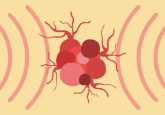Conductive ink and paper electronics could cut the cost of medical tools

Scientists have developed a quick, low-cost method of making flexible electronic sensors based on paper. While paper-based point-of-care diagnostic tests and portable DNA detectors have already been fabricated, the manufacturing techniques have been both expensive and complicated. The new method of producing paper-based electronic sensors uses silver nanowire ink, which is both highly conductive and stable. The technique, reported recently in ACS Applied Materials & Interfaces, has the potential to cut the cost of a range of medical tools, including diagnostic tests and robotics devices.
Anming Hu of the University of Tennessee (TN, USA) and colleagues developed a system for printing a pattern of silver ink on paper within a few minutes, and then hardening it with the light of a camera flash. The resulting device was able to respond to touch even after being curved, folded and unfolded 15 times, and rolled and unrolled 5000 times.
The team wanted to develop a method of printing silver nanowire ink directly onto paper, to make a sensor capable of responding either to touch or to specific molecules, such as glucose. Hu and colleagues explained that as paper is cheaply available worldwide, it has the potential to be an excellent surface for lightweight foldable electronics. Paper-based electronic devices could, in theory, be both made and utilized almost anywhere. They concluded that their newly developed sensor, owing to its durability and the fact that it is significantly lighter than many alternatives, could serve as the basis for many useful medical applications.
The paper-based capacitive touch pads are directly printed, using a needle, with high concentrations of silver nanowire ink. The system is controlled using a 2D programmable platform and the finished touch pads have the advantage of simple structure, fast production, and ease of fabrication. They hold promise for low-cost portable devices, particularly those where ultrathin, bendable and lightweight qualities are desirable.
Source: Paper electronics could make health care more accessible.





